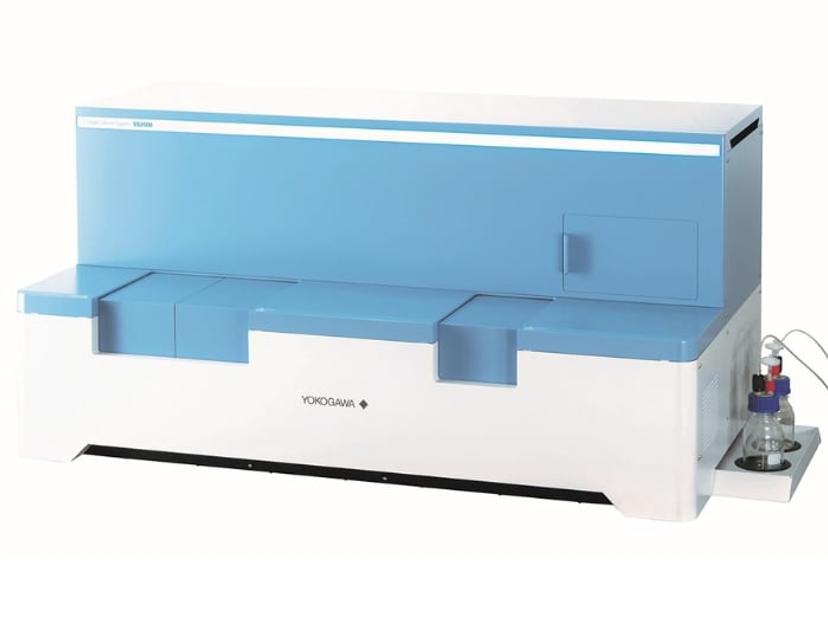Yokogawa supports the field of single-cell lipidomics
Yokogawa's Single Cellome System SS2000 uses confocal imaging technology to help abrogate challenges with single-cell lipidomics
15 May 2024

Yokogawa Electric Corporation's latest single-cell analysis solution, the Single Cellome™ System SS2000, has been featured in an article published in the journal, Analytical Chemistry, regarding work conducted by researchers at the University of Surrey in the emerging field of single-cell lipidomics. The SS2000 is a live cell image device equipped with Yokogawa's original dual-microlens spinning disk imaging technology, and uses confocal imaging technology to help abrogate challenges with single-cell lipidomics.
The SS2000 is a dual-purpose system that enables live cell imaging and also performs fully automated single-cell and subcellular sampling without going through the suspension process, thereby minimizing stress on the cells.
Single-cell lipidomics is an emerging field where the lipid composition of single cells is analyzed. These studies help overcome the challenges of bulk lipidomics by offering scientists a means of exploring spatial and temporal differences in addition to intercellular variability. Understanding these differences is key to creating a more complete picture to understand diseases such as cancer. One challenge facing researchers is the ability to isolate single cells in a way that maintains the natural lipidome of a cell. Current methods of single-cell isolation detach and suspend multiple cells at once and then isolate them through a narrow channel, but this can be particularly stressful to cells and may result in alterations to cellular lipid make up.
Yokogawa's collaborators at the University of Surrey have shown that Yokogawa's SS2000 is a vast improvement over other single-cell isolation technologies in the context of single-cell lipidomics. With the ability to sample adherent cells in culture, the SS2000 has allowed researchers to maintain the natural lipid profile of sampled cells while also providing spatial and temporal information based on real time imaging. The researchers have taken advantage of this unique dual capability to create a workflow that is not feasible with other technologies. They have coupled the spatial and temporal information gained from the SS2000's dual-microlens spinning disk imager with liquid chromatography mass spectrometry data conducted on each sampled cell. This novel approach is a radical step forward in the field of lipidomics, which will help lead to breakthroughs in alternative treatments and therapies for cancer, diabetes, and cardiovascular disease.
